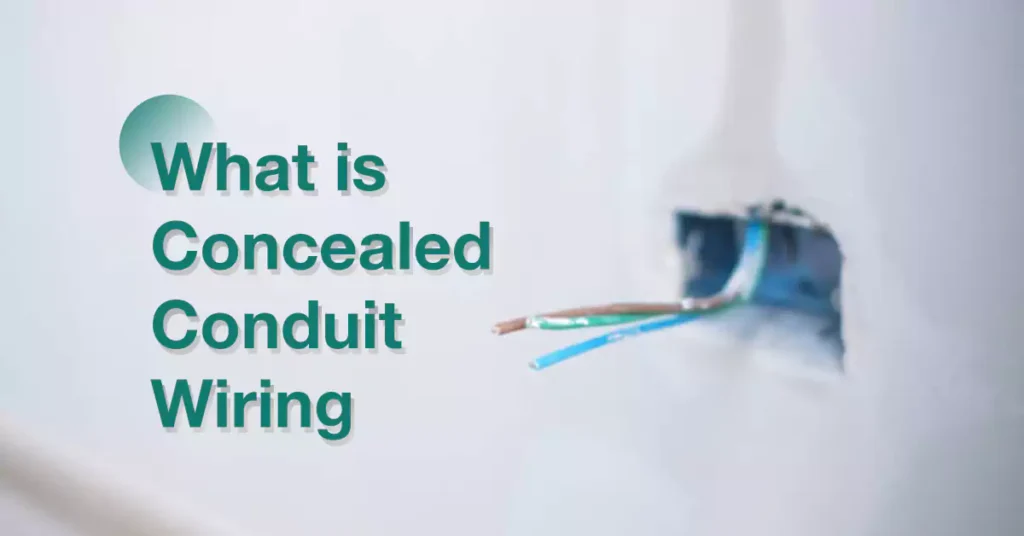
Table des matières
Lorsqu'il s'agit d'installations électriques, le câblage par conduit dissimulé devrait être un bon choix pour des raisons de sécurité et d'esthétique.
Le câblage par conduits dissimulés implique l'installation de câbles électriques dans des conduits métalliques rigides ou des conduits en PVC, qui sont ensuite cachés derrière des murs, des plafonds ou des sols. Ce guide complet vise à fournir une compréhension approfondie du câblage par conduits dissimulés, en explorant ses avantages, son processus d'installation et sa conformité aux codes et réglementations électriques.
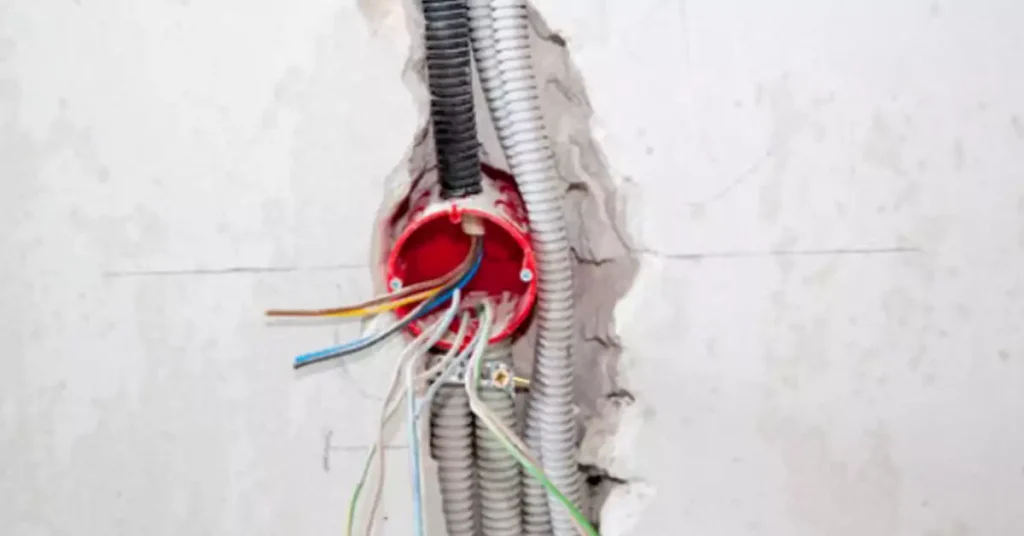
Conduit dissimulé Le câblage désigne la pratique consistant à faire passer des câbles électriques dans des conduits métalliques rigides ou des conduits en PVC cachés derrière des murs, des plafonds ou des sols. Cette méthode consiste à dissimuler l'infrastructure de câblage pour améliorer la sécurité, l'esthétique et la fonctionnalité des installations électriques. Les conduits agissent comme des canaux de protection, enfermant les câbles électriques et en les protégeant des dommages ou de l'exposition potentiels.
Le câblage par conduits dissimulés offre une approche plus organisée et rationalisée par rapport aux conduits de surface traditionnels ou aux méthodes de câblage ouvert. Au lieu d'avoir des fils et des câbles visibles le long des surfaces des murs ou des plafonds, le câblage par conduits dissimulés maintient l'infrastructure électrique cachée, offrant ainsi une apparence propre et épurée.
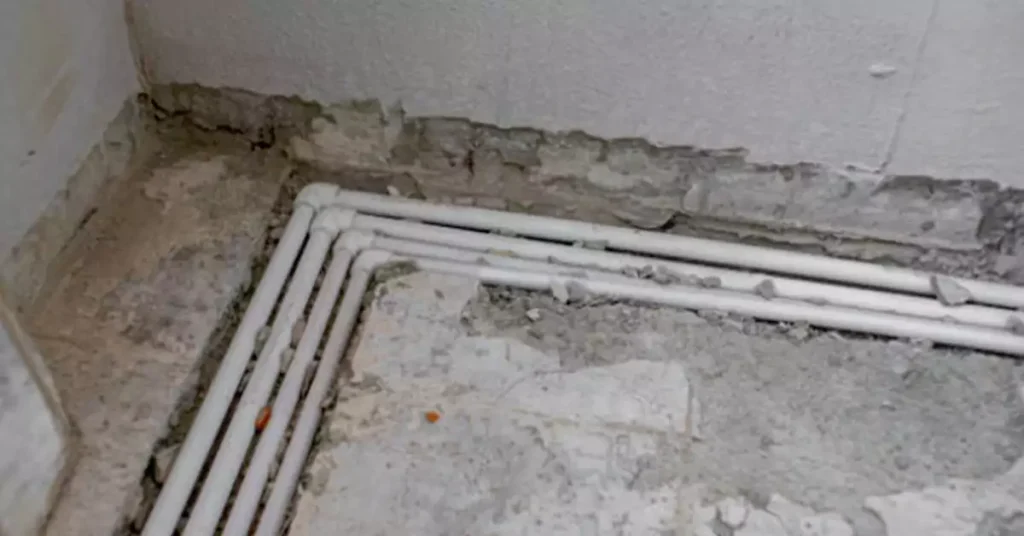
La dissimulation du câblage électrique présente plusieurs avantages clés dans les installations électriques :
Le câblage par conduits dissimulés privilégie la sécurité en offrant une protection physique aux câbles électriques. Les conduits agissent comme une barrière, protégeant les câbles contre les dommages accidentels dus à des facteurs tels que les impacts physiques, la pénétration d'humidité ou les environnements corrosifs. En minimisant le risque de dommages ou d'exposition, le câblage par conduits dissimulés réduit le risque de décharges électriques, de courts-circuits ou d'incendies, garantissant ainsi la sécurité des occupants et de la propriété.
Les câbles électriques peuvent être vulnérables aux éléments extérieurs, tels que l'humidité, la poussière ou les produits chimiques. En dissimulant le câblage dans des conduits, vous le protégez de ces facteurs environnementaux, ce qui améliore sa longévité et réduit le risque de dysfonctionnements ou de pannes électriques. Cette protection est particulièrement importante dans les zones à taux d'humidité élevé, telles que les salles de bains, les cuisines ou les installations extérieures.
Le câblage dissimulé améliore considérablement l'attrait visuel d'un espace. En cachant les fils et les câbles derrière les murs, les plafonds ou les sols, l'environnement intérieur apparaît propre, épuré et visuellement agréable. Cet avantage esthétique est particulièrement souhaitable dans les environnements où une apparence élégante et professionnelle est recherchée, comme les maisons résidentielles, les bureaux, les magasins de détail ou les lieux d'accueil.
Le fait de dissimuler le câblage électrique libère un espace précieux dans la pièce. L'absence de fils et de câbles apparents permet une plus grande flexibilité dans la conception de l'agencement et de la disposition des meubles, des luminaires et des éléments décoratifs. L'absence de câblage visible crée également une sensation d'espace et permet une intégration transparente des systèmes électriques dans la conception intérieure globale.
Le câblage par conduits dissimulés offre une gamme d'avantages qui en font une méthode privilégiée pour les installations électriques. Ces avantages englobent l'esthétique, la protection et la sécurité, la flexibilité des modifications et la durabilité accrue du système de câblage.
L'un des principaux avantages du câblage dissimulé est son impact positif sur l'esthétique. Les fils et câbles exposés peuvent créer une apparence encombrée et peu attrayante dans les espaces résidentiels et commerciaux. Le fait de dissimuler le câblage derrière les murs, les plafonds ou les sols offre un environnement propre et épuré, permettant de se concentrer sur les éléments de conception et les caractéristiques architecturales de l'espace. En éliminant les fils visibles, le câblage dissimulé améliore l'attrait visuel global et crée une atmosphère plus agréable et plus professionnelle.
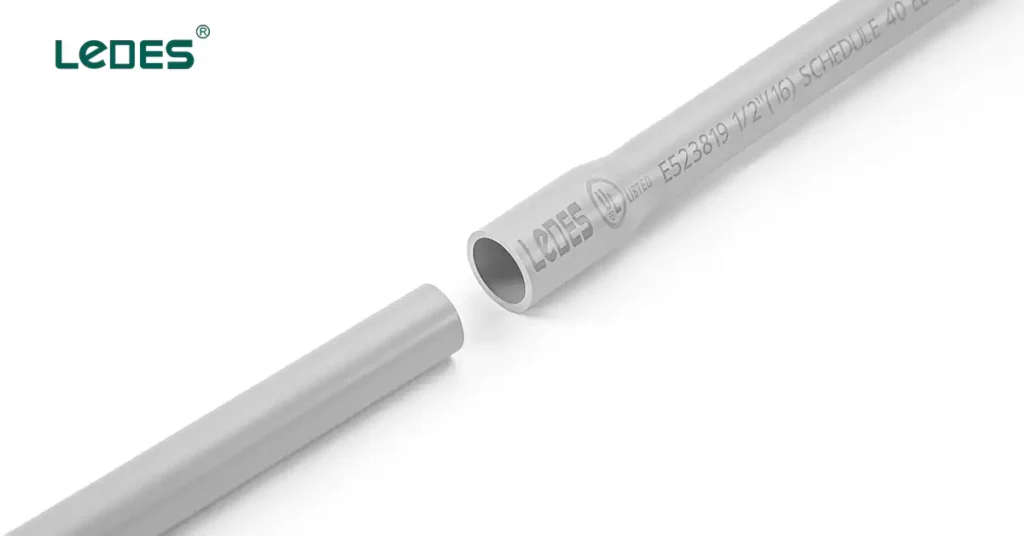
Le câblage par conduits dissimulés privilégie la protection et la sécurité du câblage électrique. En acheminant les câbles dans des conduits, le système est protégé contre les dommages accidentels, les impacts physiques et les facteurs environnementaux. Les conduits agissent comme une barrière protectrice, réduisant le risque de chocs électriques, de courts-circuits ou d'incendies. Cette couche de protection supplémentaire assure la sécurité des occupants et minimise le risque de risques électriques. Le câblage par conduits dissimulés est particulièrement important dans les zones où l'humidité, la poussière ou les substances corrosives peuvent constituer une menace pour le système électrique.
Le câblage par conduits dissimulés offre une flexibilité et une facilité de modification. À mesure que les besoins électriques évoluent ou que des modifications deviennent nécessaires, le câblage par conduits dissimulés permet un accès plus facile à l'infrastructure de câblage. Les électriciens peuvent apporter des modifications ou des ajouts sans avoir à démolir ou à perturber de manière importante les murs, les plafonds ou les sols. La possibilité d'accéder et de modifier le système de câblage avec une relative facilité fait du câblage par conduits dissimulés un choix pratique pour les rénovations, les extensions ou les futures mises à niveau. Cette flexibilité garantit que le système électrique peut s'adapter aux exigences changeantes sans inconvénient ni coût significatif.
Le câblage par conduits dissimulés contribue à la durabilité et à la longévité globales du système électrique. En enfermant les câbles dans des conduits, ils sont protégés des éléments extérieurs tels que l'humidité, la poussière ou les substances corrosives. Cette protection réduit le risque de dégradation des câbles, d'endommagement de l'isolation ou d'usure prématurée. Le câblage par conduits dissimulés permet de maintenir l'intégrité du système électrique sur une période prolongée, ce qui se traduit par une installation plus fiable et plus durable. Cet avantage est particulièrement important dans les zones aux environnements difficiles ou dans lesquelles le système électrique peut être soumis à une utilisation régulière et à des dangers potentiels.
Le câblage par conduit dissimulé se compose de divers composants qui fonctionnent ensemble pour créer une installation électrique sûre et efficace. Voici quelques composants principaux :
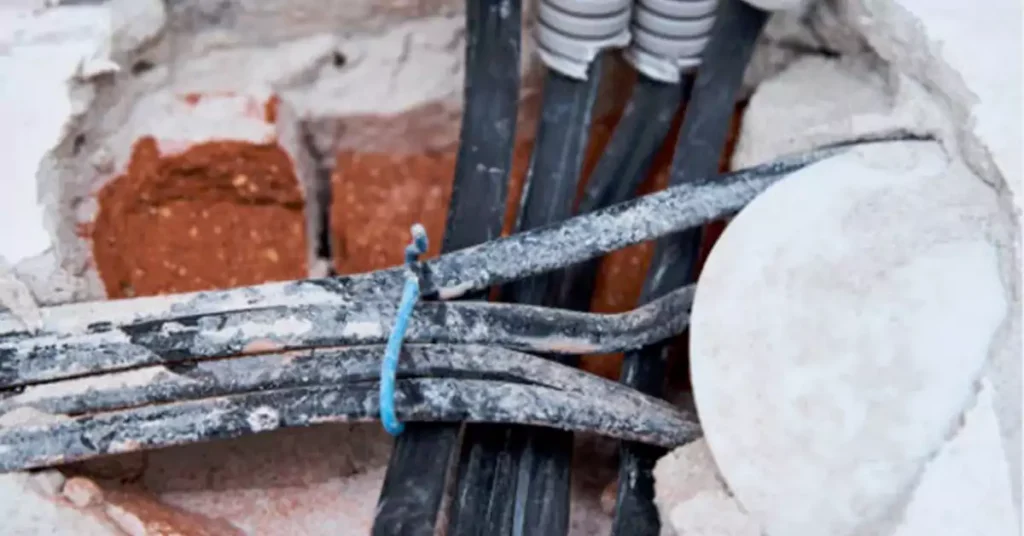
Les conduits sont des canaux de protection qui abritent et dissimulent les câbles électriques dans des conduits de câblage dissimulés. Les conduits peuvent être fabriqués à partir de différents matériaux, notamment du métal et du PVC (polychlorure de vinyle). Les conduits métalliques, tels que l'acier galvanisé ou l'aluminium, sont connus pour leur solidité, leur durabilité et leur résistance aux chocs physiques. Les conduits en PVC, en revanche, sont légers, résistants à la corrosion et faciles à utiliser. Le choix du matériau du conduit dépend de facteurs tels que l'environnement d'installation, les exigences du code électrique et les préférences personnelles.
Les câbles électriques sont les fils conducteurs qui transmettent l'électricité dans le système de câblage à conduits dissimulés. Différents types de câbles électriques sont utilisés en fonction de l'application spécifique, des exigences de tension et de la capacité de charge. Les types courants de câbles électriques comprennent :
Le câble NM, également connu sous le nom de Romex, est un type de câble très utilisé qui se compose de conducteurs isolés dans une gaine en plastique flexible. Il est couramment utilisé pour les installations électriques résidentielles.
Le câble CA est doté de conducteurs protégés par une armure métallique flexible, qui offre une protection mécanique supplémentaire. Il est couramment utilisé dans les environnements commerciaux et industriels où une durabilité accrue est requise.
Le câble UF est conçu pour les installations souterraines, telles que l'éclairage extérieur ou les lignes électriques enterrées. Il résiste à l'humidité et peut supporter un enfouissement direct sans nécessiter de conduit.
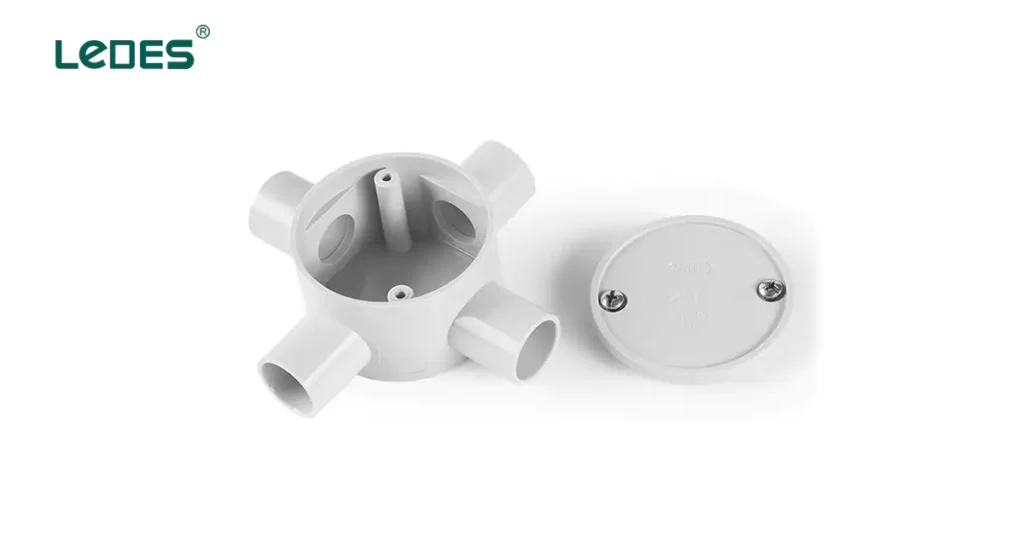
Boîtes de jonction Les boîtiers électriques servent de boîtiers de protection pour les connexions électriques et les jonctions de câbles. Ces composants garantissent que les connexions électriques sont sécurisées, organisées et protégées des éléments extérieurs. Les boîtes de jonction sont disponibles dans différentes tailles et configurations pour répondre aux différents besoins de câblage. Elles sont généralement en métal ou en PVC et possèdent des couvercles amovibles pour un accès facile au câblage à l'intérieur. Les boîtiers électriques sont des boîtes plus grandes qui offrent un espace supplémentaire pour loger des composants électriques tels que des interrupteurs, des disjoncteurs ou des panneaux de commande.
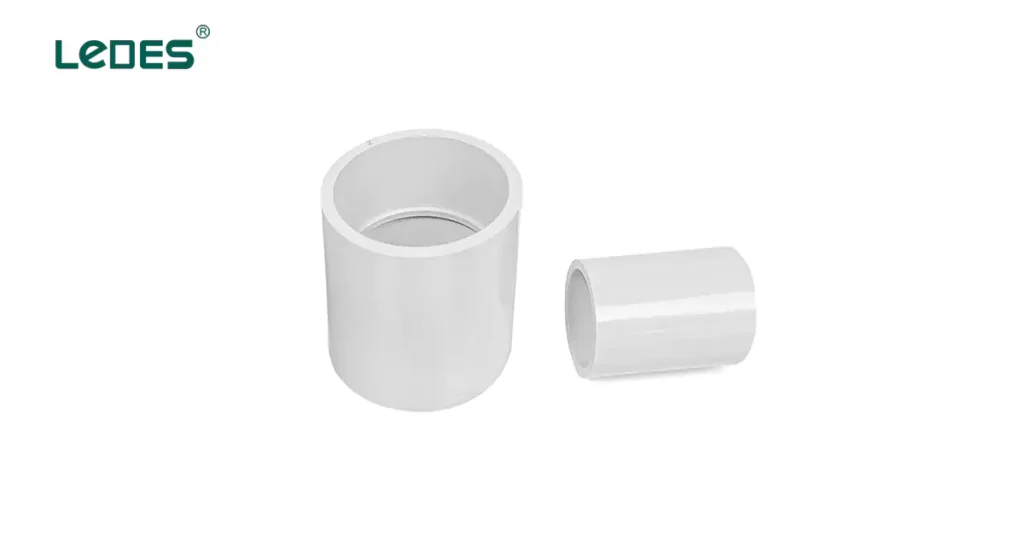
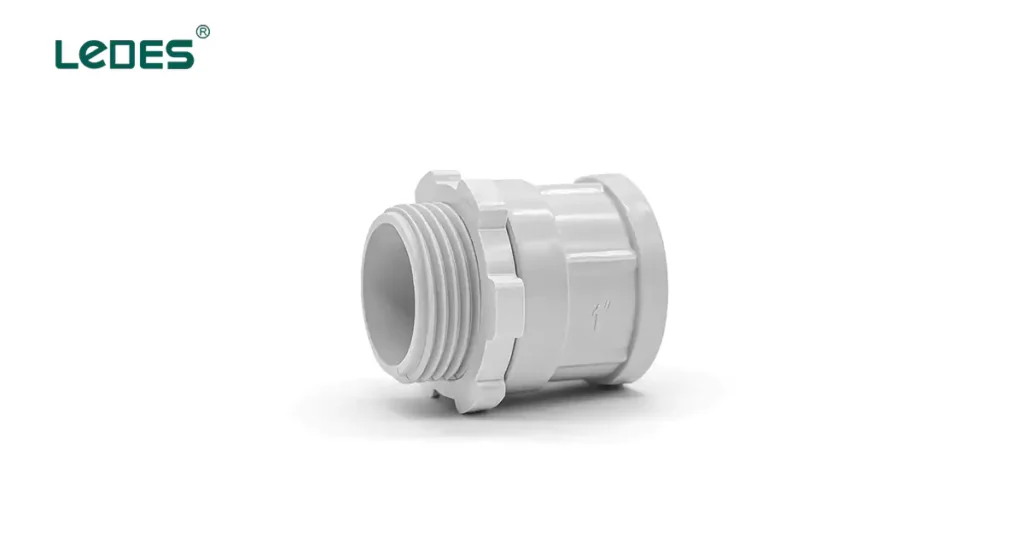
Les connecteurs, les raccords et les raccords sont des composants essentiels utilisés pour joindre et fixer les conduits, les câbles et les boîtes de jonction dans le système de câblage à conduits dissimulés. Les connecteurs sont utilisés pour créer des connexions électriques sécurisées entre les câbles et les appareils, tandis que les raccords sont utilisés pour joindre des sections de conduits ensemble. Les raccords, tels que les coudes ou les connecteurs, sont utilisés pour naviguer dans les coins ou les changements de direction dans le système de conduits. Ces composants assurent un alignement, une mise à la terre et une protection appropriés du système de câblage à conduits dissimulés.
La planification et la conception d'un système de câblage à conduits dissimulés nécessitent une prise en compte minutieuse de divers facteurs pour garantir une installation électrique sûre, efficace et conforme aux normes. Les éléments suivants sont des considérations importantes lors de la planification et de la conception d'un câblage à conduits dissimulés :
Avant de concevoir un système de câblage à conduits dissimulés, il est essentiel de calculer les besoins en charge électrique de l'espace. Cela implique de déterminer la consommation électrique prévue des appareils et dispositifs électriques qui seront connectés au système. Un calcul de charge approprié garantit que le câblage et les circuits peuvent gérer la demande électrique prévue sans surcharge. Il est également important de prendre en compte les besoins électriques futurs pour permettre d'éventuelles extensions ou ajouts au système.
L'identification des parcours de conduits optimaux est essentielle pour une installation efficace et la fonctionnalité du système de câblage à conduits dissimulés. Les facteurs à prendre en compte comprennent la disposition et la structure du bâtiment, l'accessibilité aux appareils et aux prises électriques et la réduction de la longueur des conduits. La planification des parcours de conduits à l'avance permet d'éviter les coudes inutiles, les longueurs excessives ou les obstructions qui pourraient entraver le processus d'installation ou la maintenance future.
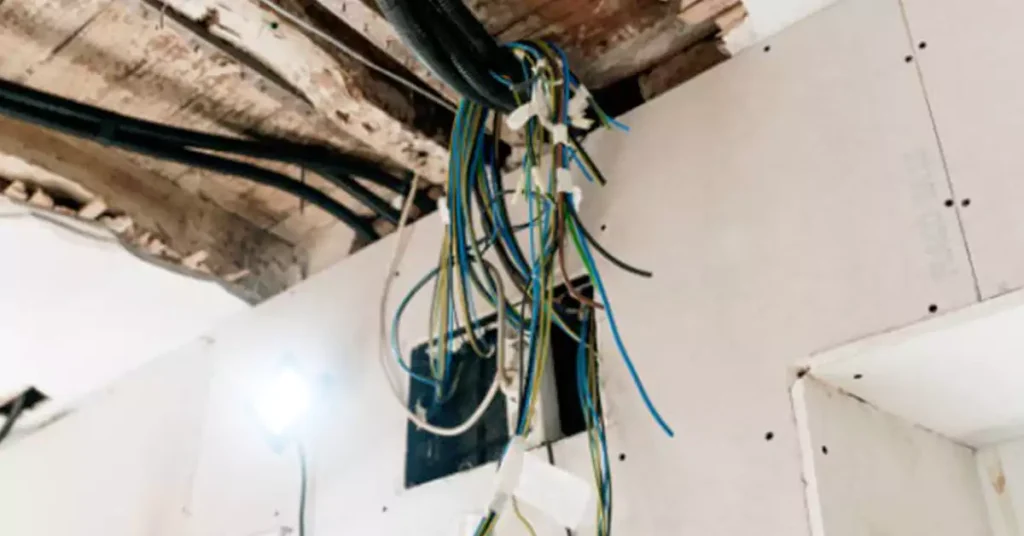
Il est essentiel de sélectionner les dimensions et les matériaux appropriés des conduits pour accueillir les câbles électriques et assurer une protection adéquate. La taille du conduit doit être basée sur le nombre et la taille des câbles qui y seront acheminés. Il est important de tenir compte des valeurs nominales d'intensité et des capacités de remplissage spécifiées par les codes électriques pour éviter le surpeuplement et la surchauffe des câbles. De plus, le choix du matériau du conduit doit être conforme aux exigences d'installation spécifiques, telles que les conditions environnementales, la résistance au feu ou les environnements corrosifs.
Le câblage des conduits dissimulés doit être conforme aux codes et réglementations électriques établis par les autorités locales. Ces codes garantissent la sécurité et le bon fonctionnement du système électrique. Il est essentiel de consulter les codes et réglementations électriques pertinents pour déterminer les exigences spécifiques liées au câblage des conduits dissimulés. Les considérations de conformité comprennent une mise à la terre appropriée, les exigences de profondeur minimale des conduits, les capacités de remplissage maximales, les dégagements d'installation et l'utilisation de matériaux et de composants approuvés.
De plus, il est conseillé de consulter un électricien qualifié ou un ingénieur expérimenté dans le câblage de conduits dissimulés pour s'assurer que la conception répond à toutes les normes de sécurité et de réglementation nécessaires. Leur expertise peut aider à optimiser la conception, à relever les défis et à garantir une installation réussie de câblage de conduits dissimulés.
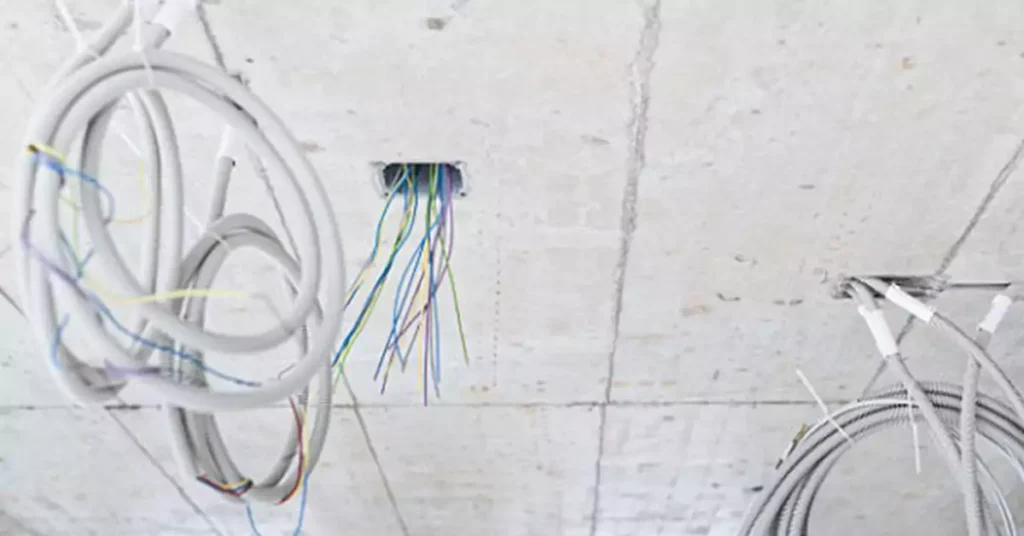
Le processus d'installation d'un câblage à conduit dissimulé comprend plusieurs étapes pour garantir un système électrique sûr et efficace. Il est important de suivre les meilleures pratiques de l'industrie et de respecter les codes et réglementations électriques. Ce qui suit décrit le processus général d'installation du câblage à conduit dissimulé :
Avant de commencer l'installation, examinez les plans et la conception électriques pour vous assurer de leur exactitude et de leur conformité aux exigences du projet. Confirmez l'emplacement des appareils électriques, des prises et des interrupteurs, et déterminez les itinéraires de conduits optimaux en fonction de la structure et de l'agencement du bâtiment.
En vous servant des plans électriques comme guide, marquez les emplacements où les conduits seront installés. Utilisez un détecteur de montants et d'autres outils appropriés pour déterminer le chemin et éviter tout obstacle structurel ou danger dans les murs, les plafonds ou les sols.
Commencez par percer des trous ou créer des points d'accès aux emplacements marqués. Installez les conduits en les fixant solidement aux surfaces, telles que les montants muraux ou les solives de plafond, à l'aide de sangles ou de pinces appropriées. Assurez-vous que l'alignement, le support et l'espacement entre les conduits sont corrects, conformément aux codes électriques.
À l'aide d'outils de tirage de câbles appropriés, tirez soigneusement les câbles électriques à travers les conduits. Assurez-vous que les câbles ne sont pas endommagés pendant le processus de tirage. Utilisez un lubrifiant pour câbles si nécessaire pour réduire la friction et faciliter le tirage des câbles. Fixez les câbles aux conduits à intervalles réguliers à l'aide de colliers de serrage ou de clips de fixation.
Au niveau des boîtes de jonction, dénudez les extrémités des câbles électriques pour exposer les conducteurs. Suivez le code couleur approprié et connectez les câbles aux interrupteurs, prises, luminaires ou autres appareils électriques conformément aux plans électriques. Utilisez des connecteurs, des raccords ou des raccords appropriés pour joindre les câbles et assurer des connexions sécurisées. Installez les fils de mise à la terre selon les besoins et connectez-les aux points de mise à la terre.
Montez les boîtes de jonction et les boîtiers électriques aux emplacements appropriés, comme indiqué dans les plans électriques. Assurez-vous qu'ils sont correctement mis à la terre et solidement fixés. Laissez suffisamment d'espace à l'intérieur des boîtes pour un accès facile et des modifications ou ajouts futurs.
Une fois l'installation terminée, effectuez des tests approfondis pour garantir le bon fonctionnement du système de câblage à conduits dissimulés. Utilisez un testeur de tension pour vérifier la présence d'électricité dans les circuits. Testez les interrupteurs, les prises et les luminaires pour vous assurer qu'ils fonctionnent correctement. Vérifiez s'il y a des connexions desserrées, des courts-circuits ou des défauts électriques et résolvez-les rapidement.
Après avoir effectué des tests et des vérifications avec succès, recouvrez les conduits avec des finitions murales, de plafond ou de sol appropriées. Remplacez ou installez des plaques de protection pour les interrupteurs et les prises. Assurez-vous que tous les points d'accès, tels que les panneaux ou les boîtiers électriques, sont correctement fermés et sécurisés.
Planifiez une inspection finale avec les autorités locales compétentes ou les inspecteurs en électricité pour garantir la conformité aux codes et réglementations électriques. Répondez à tous les problèmes ou préoccupations soulevés lors de l'inspection et apportez les corrections nécessaires si nécessaire.
Il est important de noter que le processus d’installation peut varier en fonction des exigences spécifiques du projet, de la construction du bâtiment et des codes et réglementations électriques en vigueur dans la juridiction locale.
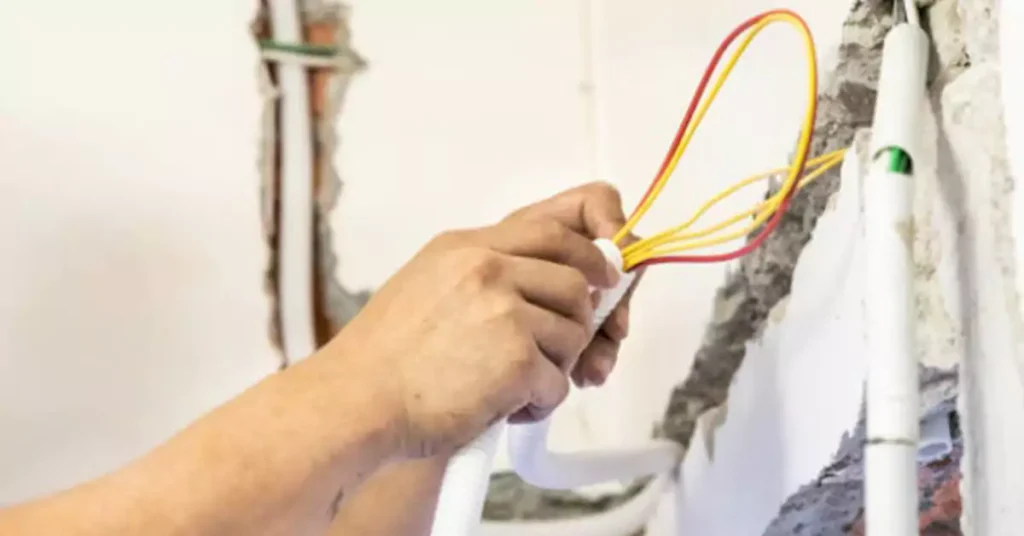
Voici 12 conseils de pro à suivre lors de l’installation de câbles à conduits dissimulés :
- Planifiez soigneusement le parcours du conduit pour éviter toute interférence avec d’autres composants du bâtiment, comme les conduits de CVC.
- Fixez fermement le conduit à la structure du cadre, hors de portée de l’isolant et des pare-vapeur.
- Coupez le conduit avec précision et ébavurez/alésez les coupes pour éviter les éraflures à l'intérieur lors du tirage du fil.
- Pliez lentement le conduit à l’aide de l’outil approprié pour obtenir des rayons de courbure minimaux sans pliures.
- Lors du tirage du fil, utilisez un lubrifiant et tirez sur le cordon, ne dépassez pas les facteurs de frottement des parois latérales. Laissez du mou au niveau des boîtes.
- Soutenez les boîtes de jonction solidement alignées avec le cadre et positionnez-les pour un accès facile.
- Formez et étiquetez soigneusement les fils dans des boîtes avec des connecteurs appropriés, en laissant un espace supplémentaire pour les terminaisons.
- Sceller autour des boîtes, des conduits et à l'intérieur des fils pour éviter d'endommager l'isolation due à l'humidité.
- Conduit de terre et de liaison prenant correctement en compte les transitions entre le métal et le non-métallique.
- Protégez le câblage contre les dommages physiques dans les zones à fort trafic grâce à la sélection et au routage des conduits.
- Documentez les schémas, l'étiquetage et les résultats des tests pour référence future et conformité au code.
- Envisagez un éclairage basse tension à l’intérieur des cavités du plafond/des murs pour faciliter les inspections.

Le câblage par conduits dissimulés est une méthode d'installation électrique courante qui consiste à faire passer des câbles électriques et du câblage à l'intérieur de conduits dissimulés dans les murs, les plafonds ou les sols. Cette méthode présente plusieurs avantages et inconvénients, qui doivent être pris en compte lors du choix du système de câblage approprié pour une application spécifique. Les points suivants décrivent les avantages et les inconvénients du câblage par conduits dissimulés :
Le câblage dissimulé offre une apparence propre et épurée car le câblage est caché de la vue. Cela permet de maintenir l'intégrité architecturale de l'espace et permet une plus grande flexibilité dans la conception et la décoration intérieures.
Le câblage par conduits dissimulés offre une meilleure protection contre les dommages accidentels, tels que les chocs ou les altérations, par rapport aux méthodes de câblage en surface. Le câblage est protégé à l'intérieur des conduits, ce qui réduit le risque de choc électrique, d'incendie ou de court-circuit.
Le câblage par conduits dissimulés offre une protection accrue des câbles électriques contre les facteurs environnementaux, tels que l'humidité, la poussière ou les parasites. Cela améliore la longévité et la fiabilité du système électrique, réduisant ainsi le besoin d'entretien ou de réparations fréquentes.
Le câblage par conduits dissimulés minimise les interférences électromagnétiques (EMI) et les interférences radioélectriques (RFI) qui peuvent affecter les appareils électroniques sensibles. Les conduits agissent comme une barrière, protégeant les câbles des sources d'interférences externes et garantissant une meilleure qualité du signal.
Le câblage par conduits dissimulés permet une plus grande flexibilité dans la détermination de l'emplacement des prises électriques, des interrupteurs et des luminaires. Les modifications ou ajouts au système électrique peuvent être effectués plus facilement puisque les conduits offrent des voies accessibles pour les changements de câblage futurs.
Le câblage par conduits dissimulés nécessite plus de planification, de travail et d'expertise lors du processus d'installation que les méthodes de câblage en surface. Le routage des conduits dans les murs, les plafonds ou les sols peut être difficile, en particulier dans les structures existantes, et peut nécessiter des travaux de construction supplémentaires.
Le câblage par conduits dissimulés implique généralement des coûts de matériaux et de main-d'œuvre plus élevés que les méthodes de câblage en surface. Le besoin de conduits, de boîtes de jonction et de matériel associé, ainsi que la main-d'œuvre supplémentaire requise pour l'installation, peuvent contribuer à l'augmentation des dépenses.
Une fois le câblage dissimulé installé, l'accès au système électrique et le dépannage peuvent s'avérer plus difficiles. Les réparations ou modifications peuvent nécessiter l'ouverture des murs, des plafonds ou des sols, ce qui peut prendre du temps, être perturbant et coûteux.
Bien que le câblage par conduits dissimulés offre une certaine flexibilité dans le placement des prises, des modifications importantes du système électrique peuvent nécessiter des modifications des conduits dissimulés. Cela peut être plus compliqué et plus coûteux que les méthodes de câblage en surface, qui permettent des modifications plus simples.
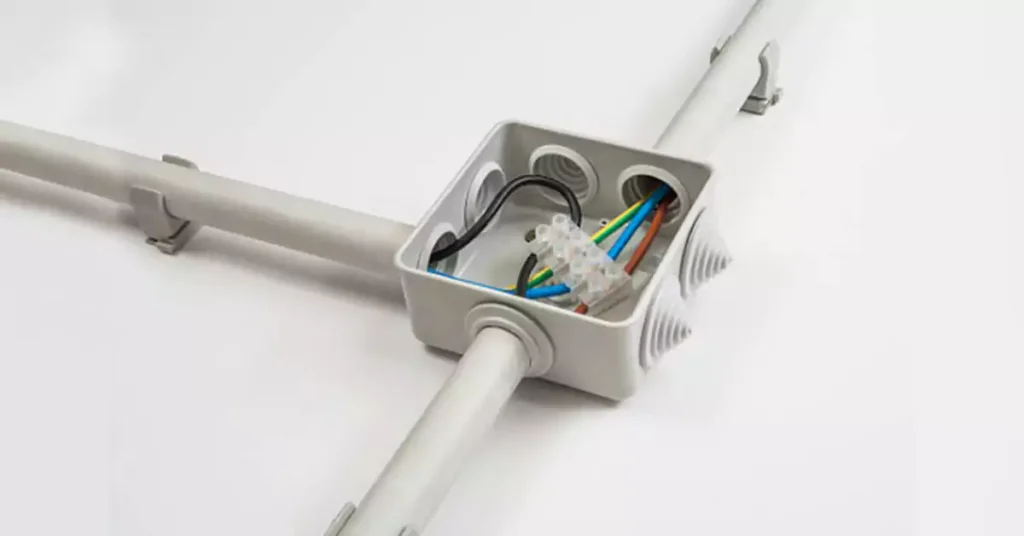
Le câblage par conduits dissimulés est largement utilisé dans divers types de bâtiments et d'installations en raison de ses avantages en termes d'esthétique, de sécurité et de durabilité. Voici les applications courantes du câblage par conduits dissimulés :
Le câblage par conduits dissimulés est couramment utilisé dans les maisons unifamiliales pour l'ensemble du système électrique. Il offre une apparence propre et épurée, permettant aux propriétaires de conserver le design intérieur souhaité sans câblage visible.
Dans les complexes d'appartements, les copropriétés ou les maisons de ville, le câblage par conduits dissimulés est utilisé pour assurer la sécurité et l'uniformité dans tout le bâtiment. Il permet une distribution efficace de l'énergie électrique aux unités individuelles tout en réduisant le risque de dommages accidentels ou de falsification.
Lors de la rénovation ou du remodelage de propriétés résidentielles, le câblage par conduits dissimulés est souvent préféré pour mettre à jour le système électrique sans compromettre l'esthétique. Il permet l'installation de nouvelles prises, interrupteurs et luminaires tout en minimisant le câblage visible.
Le câblage par conduits dissimulés est largement utilisé dans les immeubles de bureaux pour offrir une apparence soignée et professionnelle. Il répond aux exigences électriques de divers postes de travail, salles de conférence et espaces communs tout en garantissant une alimentation électrique sûre et fiable.
Le câblage par conduits dissimulés est utilisé dans les espaces de vente au détail pour alimenter l'éclairage, les présentoirs, les systèmes de point de vente et d'autres appareils électriques. Il permet de maintenir un environnement propre et visuellement attrayant pour les clients tout en garantissant la sécurité électrique.
Le câblage par conduits dissimulés est couramment utilisé dans les restaurants, les hôtels et autres établissements d'accueil. Il permet une distribution efficace de l'énergie pour les équipements de cuisine, l'éclairage, les systèmes CVC et les équipements pour les clients tout en préservant une ambiance visuellement agréable.
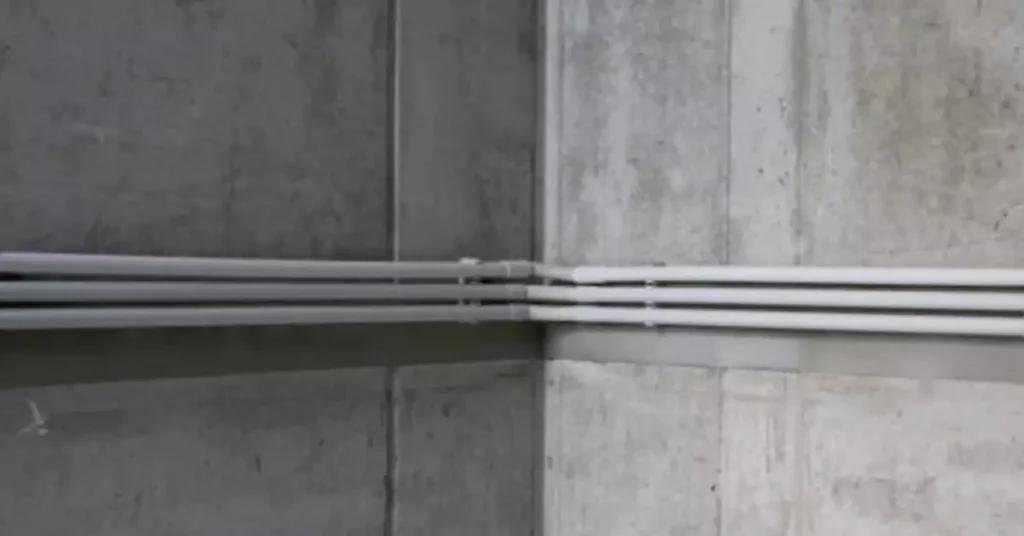
Le câblage par conduits dissimulés est essentiel dans les installations industrielles pour alimenter les machines lourdes, les lignes de production et les systèmes de contrôle. Il fournit une infrastructure électrique sûre et organisée dans des environnements difficiles, tels que les usines ou les chaînes de montage.
Le câblage par conduits dissimulés est utilisé dans les installations de stockage à grande échelle pour répondre aux besoins d'éclairage, de systèmes de convoyage, d'équipements de manutention et autres besoins électriques. Il assure une distribution d'énergie efficace et fiable dans toute l'installation.
Le câblage par conduits dissimulés est utilisé dans les installations scientifiques et de recherche pour alimenter des équipements spécialisés, des systèmes de collecte de données et des configurations expérimentales. Il permet un acheminement sûr et organisé des câbles électriques pour soutenir des activités de recherche complexes.
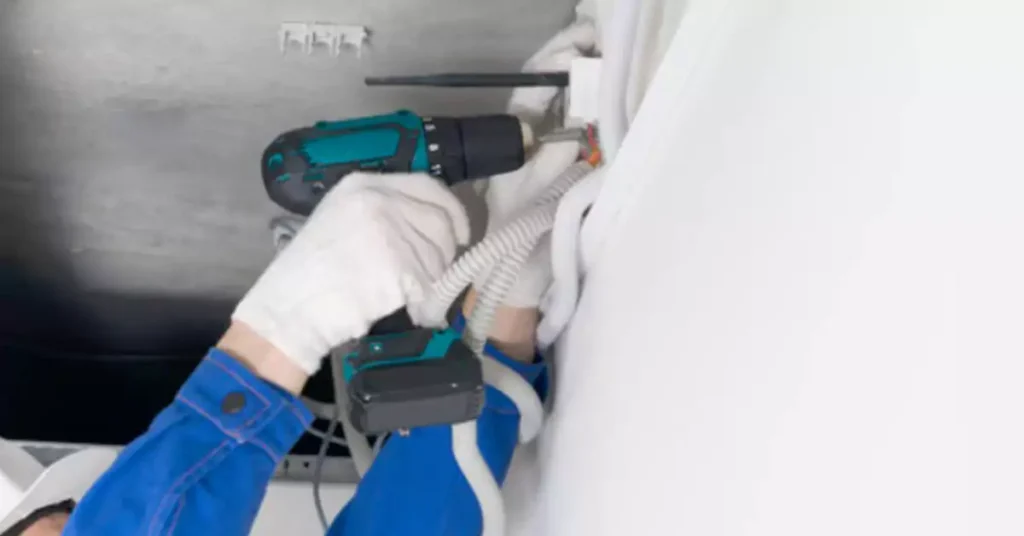
Un entretien approprié et un dépannage rapide sont essentiels pour garantir la sécurité, la fonctionnalité et la longévité des installations de câblage à conduits dissimulés.
Procédez à des inspections visuelles des câbles des conduits dissimulés pour identifier tout signe visible de dommage, d'usure ou de connexions desserrées. Recherchez des indications telles que des fils effilochés ou exposés, une isolation décolorée ou fondue, ou des signes d'humidité ou d'infestation de parasites à proximité des conduits.
Effectuez des tests électriques périodiques à l'aide d'un équipement approprié pour vérifier la continuité, la résistance d'isolement et la mise à la terre du système de câblage à conduits dissimulés. Cela permet d'identifier les défauts potentiels ou les problèmes électriques qui peuvent ne pas être visibles lors des inspections visuelles.
Assurez-vous que les conduits et les boîtes de jonction sont propres et exempts de poussière, de débris ou de toute autre obstruction. Retirez régulièrement les débris ou la poussière accumulés qui pourraient entraver le bon fonctionnement du système électrique.
Vérifiez et serrez toutes les connexions électriques, y compris les bornes de la boîte de jonction, les interrupteurs, les prises et les connexions de mise à la terre. Des connexions desserrées peuvent entraîner des arcs électriques, une surchauffe ou des problèmes d'alimentation électrique intermittents.
Vérifiez l'intégrité de toutes les mesures de protection, telles que les couvercles de conduits, les protections ou l'isolation. Remplacez rapidement les couvercles ou les protections endommagés ou détériorés pour éviter tout contact accidentel ou tout dommage au câblage.
Si un câblage endommagé est identifié, comme des fils effilochés ou exposés, il doit être réparé rapidement. Coupez la partie endommagée du fil et installez une boîte de jonction ou un connecteur d'épissure de fil pour joindre les sections en toute sécurité. Assurez-vous d'une isolation et d'une protection adéquates de la zone réparée.
Les prises, interrupteurs ou luminaires défectueux doivent être remplacés par des modèles neufs de type et de puissance appropriés. Suivez les instructions du fabricant et les codes électriques lors du remplacement des composants et assurez-vous que toutes les connexions sont sécurisées et correctement mises à la terre.
Si des modifications ou des extensions sont nécessaires dans le système de câblage à conduits dissimulés, consultez un électricien qualifié ou un professionnel de l'électricité. Ils peuvent vous conseiller sur les procédures appropriées, le dimensionnement des conduits et les permis nécessaires pour garantir la conformité aux codes électriques.
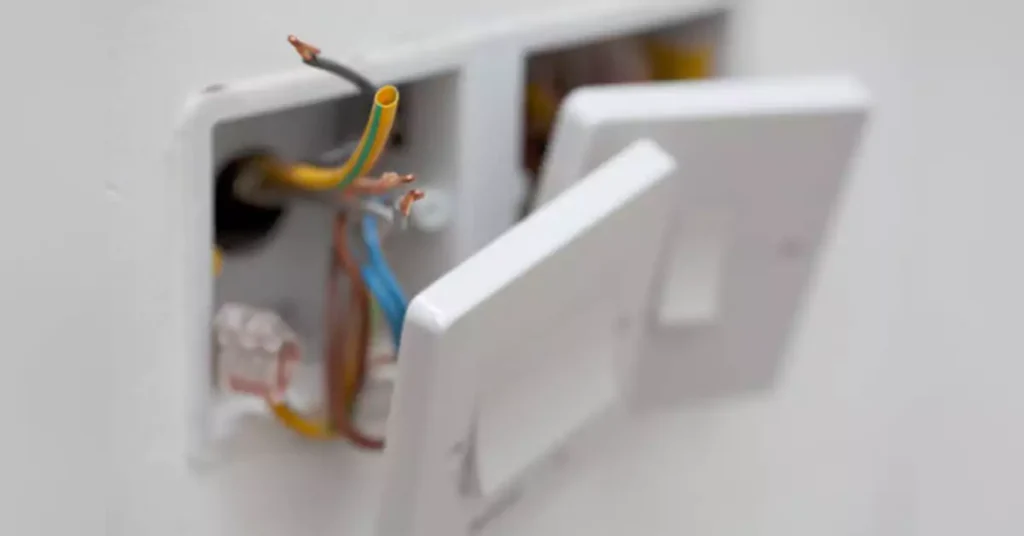
En conclusion, le câblage par conduit dissimulé offre des avantages en termes d'esthétique, de sécurité et de durabilité, ce qui en fait un choix populaire dans les environnements résidentiels, commerciaux et industriels. Il offre une apparence propre et épurée, protège contre les dommages accidentels et améliore la longévité du système électrique.
En tenant compte des avantages, des inconvénients, des pratiques de maintenance et des consignes de dépannage du câblage par conduits dissimulés, les particuliers et les organisations peuvent prendre des décisions éclairées quant à son adéquation à leurs applications spécifiques. En accordant la priorité à la sécurité, à la conformité et à la maintenance régulière, vous contribuerez à un système électrique fiable et efficace dans les bâtiments et les installations.
Des questions, n'hésitez pas à Contactez-nous pour des conseils professionnels.



